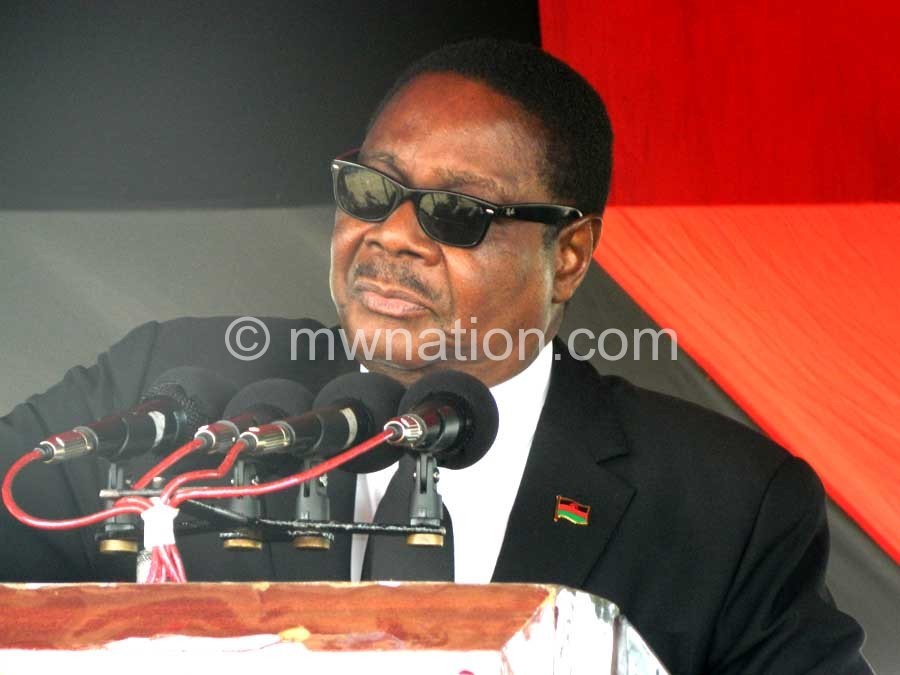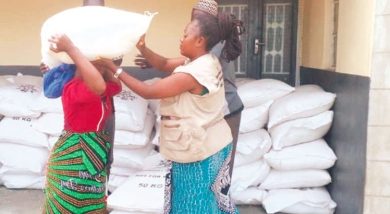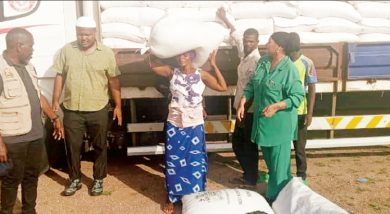APM, TREASURY DIFFER ON MINING OUTPUT
Treasury has released a report that pegs the contribution of the mining sector to the country’s gross domestic product (GDP) at less than one percent, contrary to the six percent President Peter Mutharika told Parliament in May this year.
The Annual Economic Report 2015, released by Ministry of Finance, Economic Planning and Development, indicates that mining and quarrying contributed 0.9 percent to GDP in 2014 and that projections of the sector’s contribution to national output will remain below one percent for the next two years.
Mutharika told Parliament that his government would continue to prioritise the sector to increase its contribution to the country’s GDP from the current six percent to about 20 percent by 2020.
“Mr. Speaker, Sir, government recognises that the mining sector has huge potential in contributing to the country’s economic growth and development. For this reason, government will continue to prioritise the sector with a view to increase its contribution to the country’s GDP from the current six percent to about 20 percent by 2020,” he told the House.
Ministry of Finance spokesperson Nations Msowoya said the figures captured by the President in his report were correct, saying it was his ministry that did not include major mining ventures in the calculations.
However, chief economic adviser to the President, Collins Magalasi, said he would rather believe the figures that the President presented in Parliament because they were up to date.

He said: “I can stick to what the President said on that day because the figures in the President’s speech are validated. They are actually prepared the night before presentation.”
Magalasi, however, said he would not rule out typos in either the economic report or the President’s speech.
Former minister of Mining Grain Malunga—a respected geologist and top mines technocrat—said in an interview yesterday that the six percent figure the President mentioned in Parliament was on the higher side.
He, however, said the mining and quarrying would be higher than what has been highlighted in the Treasury report.
Malunga said the mining industry in Malawi has been hit by slow growth because of the uncertainty that is dogging the industry due to negative publicity.

“Globally prices for mineral sector are going down, however in Malawi there is unnecessary alarm when it comes to the industry,” he said.
Vice-president of the Geoscientists Association of Malawi (GAM), Ansel Zabula, said the mining sector contribution to the GDP would be lower than what the President presented in Parliament.
He said: “It is an industry that would grow, but there are external factors.”
The report recognised that the mining and quarrying sector estimated growth in 2013 tumbled from 14.9 percent in 2012 to 7.6 percent.
Reads the report in part: “This is mainly attributable to lower levels of uranium output in the second half of the year. Production at the Kayelekera Uranium Mine slowed in the second half of the year due to maintenance work on the plant and low prices of uranium at the international market.
“In 2014, the mining and quarrying sector is expected to contract by 7.8 percent. The expected contraction is attributed to the suspension of production at Kayelekera Uranium Mine as the company continued to make losses due to low prices on the international market.”
However, the report threw some rays of hope for 2015, saying the sector was expected to grow by 2.2 percent, owing to moderate growth in traditional mineral outputs, including rock quarry aggregate, agricultural lime, coal and gemstones.
The report indicated that it was possible that the actual attained level may be considerably higher if Paladin resumes production of uranium at Kayelekera or if significant investments are made in the sector following the conclusion of the geo-physical airborne survey.
The report shows that the trend has been dwindling since 2012 and 2013 when the sector contributed one percent to the GDP, in 2014 the sector contributed 0.9 percent and the sector is not expected to grow in 2015 and 2016 as it is projected to also contribute 0.9 percent in the next two years.
In the report, the major contributor to the country’s GDP remains agriculture, forestry and fishing sector which in 2012 and 2013 contributed 29.9 percent and in 2014 the sector grew by 0.1 percent.
Manufacturing sector contribution to the GDP has been dwindling at an average rate of 0.5 percent and the construction sector contribution to the GDP is also going down at an average rate of 0.5 percent.
Wholesale and retail trade is the second largest contributor to the GDP at almost a constant 15.5 percent since 2012 and the projections indicate that the sector would contract at an average 0.2 percent.





